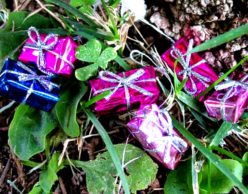Our Top 10 Posts On Empathy In A Mash-Up World

Being a Mash-Up is complicated, to say the least. Living in a Mash-Up world can also be very complicated. Now add our current political climate to the mix, and it starts to feel like we’ll never be able to talk, much less see each other, ever again. How do we even begin to tackle all of this? Let’s start with empathy. Listening and learning from what others’ lived experiences can transform our perspective and outlook on life, for the better. In Mash-Up America, empathy is now more imperative than ever.
Let us help you get started. Here are our top ten posts with tips, questions and answers, and stories on being a Mash-Up in America in all of its colorful and curious splendor.
Be Less Racist: 12 Tips for White Dudes, by A White Dude

We all want to do better, and be better. This is especially true for a white guy. Dan Zanes, a Grammy-Award-winning musician, regular dude and work-in-progress [Editor’s note: His words! We think he’s magical], gives us his top tips for how to start living a less racist life.
11 Things You Wanted to Know About My Turban But Were Too Afraid to Ask
Turbans are a source of mystery — and all too often, terrible misunderstanding — to those who don’t wear them. What do they mean? Why do you wear them? Do you have to do everything in a turban?Enter Rupinder Singh, founder of American Turban, social justice fellow at the Sikh Coalition, and owner of more than 20 turbans. Ever wanted to know how long it takes to tie a turban? Read on, playas.
An Outsider on the Inside (Sometimes)

Among the many things to tackle when you’re a “racially ambiguous” Mash-Up — being half, codeswitching, trying to convince people you’re not a unicorn — few things are more awkward than when somebody assumes you’re on the inside and makes a racist joke about the outside. Oops, turns out you’re on the outside, too. Our Black-Indian-Baptist-Hindu-American Mash-Up Sharda Sekaran tells us how she copes.
Southern Discomfort

Oh, food. Smelly, delicious, “ethnic” food. As fully grown Mash-Ups, we are nothing but grateful for our early exposure to the flavors and scents of our culture. Our Filipino-American Mash-Up Alexis Diao shares with us her journey from dreading school lunch to reconciling — and savoring — her Filipino and American Southern roots.
Hey Dad, Are We White?

Discussing atheism at the breakfast table with your Mexican-Japanese-“kinda”-Jewish-American Mash-Up kids: This is the life of Nathan Thornburgh, editor, publisher and co-founder of Roads & Kingdoms, a provocative travel and culture journal with an eye on food, war, and sport. He sat down with us to discuss his thoughts on Asian daters, Americans abroad, and what to do when your mash-up kids ask if they’re white or not. Hint: It’s complicated.
A Marriage in Black and White

No issue is ever black and white. Mash-Up marriage is no exception. Interracial relationships are increasingly common in Mash-Up America — love wins! — and have the potential to be increasingly fraught, as our country struggles through one of the most challenging periods in our recent racial and social history. So here to tell us about their mash-up marriage are Margit Detweiler and Mark Gardner. They make their home in Brooklyn with their cat, Alice, where they ignore the side-eye from people on the street, have a special song about white people, and listen to each other, openly. Let’s listen to them.
7 Tips for Turning Anger Into Hope

At Mash-Up HQ, we are fueled by hope and optimism and joy. But some days, guys. Some days anger and frustration and sadness win. And that’s okay — but we won’t let our anger rob us of our hope. So how do we close the door on darkness, and replenish our stores of compassion and hope so we have the energy to fight for a better tomorrow? Our Sikh-American Mash-Up Rupinder Singh shares with us his best strategies, rooted in his Sikh faith.
Transracial Adoption Series

Part 1: No Box Unchecked: How We Became A Family
In this, the first of a three-part series, our Indian-American Mash-Up Nishta Mehra tells us how Shiv, her Black son, came into her and her white partner’s life. Because sometimes we choose our families, and sometimes they choose us.
Part 2: Building a Village, One Papaw at a Time
In this, the second installment of a three-part series, our Indian-American Mash-Up Nishta Mehra tells us how she built a supportive community around her queer, multiracial family. Because it takes a village — a big, complicated village.
Part 3: 10 Tips for a Successful Transracial Adoption
In this, the third and final installment of a three-part series, our Indian-American Nishta Mehra provides concrete, specific tips on building and sustaining her transracial adoptive family, which is white, Black, Indian, gay, multiracial and full of love.






